|
|
|
Sort Order |
|
|
|
Items / Page
|
|
|
|
|
|
|
| Srl | Item |
| 1 |
ID:
105849
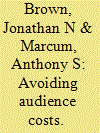

|
|
|
| 2 |
ID:
167311
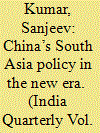

|
|
|
|
|
| Summary/Abstract |
In recent years, there has been a rise in China’s profile in South Asia. It is no surprise that Chinese experts have used terms, such as ‘new springtime’ in China–South Asia relations, ‘rediscovery of the strategic status of South Asia’ and ‘most relevant region with regard to the rise of China’. The objective of this article is to examine the nature and drivers of China’s South Asia policy, especially under the leadership of Xi Jinping vis-à-vis China’s policy towards the region in the past. It is not sufficient to only examine international factors or foreign and security policy in the context of the neighbouring region, such as South Asia. China’s ‘domestic periphery’ presents a significant threat to its national security. These areas are linked to neighbouring countries of South Asia and Central Asia.
The announcement by Chinese President Xi Jinping of a ‘New Era’ or ‘third era’ in the history of Communist Party of China (CPC) represents a China which is known for its dictum ‘striving for achievement’ (fenfa youwei). This is different from the second era’s policy of ‘keeping a low profile and biding the time’ proposed by Deng Xiaoping. Of course, the name of Mao Zedong is synonymous with the first era beginning from 1949.
|
|
|
|
|
|
|
|
|
|
|
|
|
|
|
|
| 3 |
ID:
191239
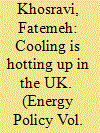

|
|
|
|
|
| Summary/Abstract |
The cooling of buildings is currently responsible for about 20% of total electricity use worldwide. It is estimated that the electricity needed for cooling will more than triple by 2050. Despite this concerning outlook, little attention has been paid to cooling demand in policy and research in the United Kingdom (UK). The demand for space cooling in the UK’s domestic and non-domestic buildings is currently small—about 10% of total electricity use. However, this has the potential to increase as the climate warms and expectations of comfort grow. This paper reviews UK cooling demand and how this has been considered in energy policy. Following a thorough review of the existing literature using a cooling decarbonisation framework (Avoid, Improve and Shift), it is clear there is a limited understanding of the future UK cooling demand for domestic buildings in a warmer future as well as how policy makers and households should act. More importantly, this sector appears under-represented in the UK research and policy landscape compared to heating despite obvious technological crossovers associated with electrification. Several policy and research recommendations have been made based on these findings.
|
|
|
|
|
|
|
|
|
|
|
|
|
|
|
|
| 4 |
ID:
113959
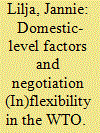

|
|
|
|
|
| Publication |
2012.
|
| Summary/Abstract |
Some suggest that the fault lines of the WTO's perceived failures actually lie in failures at the domestic level. This study examines the factors that can explain flexibility (and inflexibility) in multilateral trade negotiations within WTO member states. To shed light on the role of domestic factors in influencing WTO positions, we examine one member state in connection with a high-level meeting. India at the July 2008 Ministerial is selected primarily for methodological reasons. The empirical analysis provides preliminary support for the proposition that domestic policy-making structures marked by continuous information exchange and coordination are more likely to yield negotiation flexibility in multilateral talks. More specifically, the intense interaction that marks the relationships between actors involved in policy making on Non-Agricultural Market Access (NAMA) and services, where the Indian negotiation position was flexible overall, stands in contrast to what took place in the area of agriculture, where India took a manifestly inflexible stand. Competing explanations fail to fully account for the variation in these negotiating postures. A key insight from the analysis is that organized and regularized consultations, involving the same actors over time, are important. There is also a need for public outreach strategies in connection with high-level WTO meetings.
|
|
|
|
|
|
|
|
|
|
|
|
|
|
|
|
| 5 |
ID:
101685
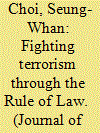

|
|
|
|
|
| Publication |
2010.
|
| Summary/Abstract |
The question of whether democratic institutions facilitate terrorist activities is a controversial one in current scientific studies of terrorism. Although the ''rule of law'' is an essential institutional pillar of any mature democracy, its direct effect on domestic and international terrorism remains unexplored. Conceiving democratic rule of law as the coexistence of effective and impartial judicial systems and citizens' recognition of the law as legitimate, the author presents a causal explanation in which a high-quality rule of law is considered to dampen ordinary citizens' opportunity and willingness to engage in political violence, protecting democracies from becoming victims of terrorism. Built on a cross-sectional, time-series data analysis of 131 countries during the period from 1984 to 2004, the author finds that, ceteris paribus, maintaining a sound rule of law notably reduces the likelihood of any type of terrorist events. In short, the rule of law instantiated in democratic institutions provides a formidable bulwark against terrorism.
|
|
|
|
|
|
|
|
|
|
|
|
|
|
|
|
| 6 |
ID:
116726
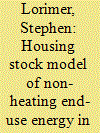

|
|
|
|
|
| Publication |
2012.
|
| Summary/Abstract |
This paper proposes a housing stock model of non-heating end-use energy for England that can be verified using aggregate energy use data available for small areas. These end-uses, commonly referred to as appliances and lighting, are a rapidly increasing part of residential energy demand. This paper proposes a model that can be verified using aggregated data of electricity meters in small areas and census data on housing. Secondly, any differences that open up between major collections of housing could potentially be resolved by using data from frequently updated expenditure surveys. For the year 2008, the model overestimated domestic non-heating energy use at the national scale by 1.5%. This model was then used on the residential sector with various area classifications, which found that rural and suburban areas were generally underestimated by up to 3.3% and urban areas overestimated by up to 5.2% with the notable exception of "professional city life" classifications. The model proposed in this paper has the potential to be a verifiable and adaptable model for non-heating end-use energy in households in England for the future.
|
|
|
|
|
|
|
|
|
|
|
|
|
|
|
|
| 7 |
ID:
117250
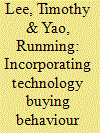

|
|
|
|
|
| Publication |
2013.
|
| Summary/Abstract |
The UK has a target for an 80% reduction in CO2 emissions by 2050 from a 1990 base. Domestic energy use accounts for around 30% of total emissions. This paper presents a comprehensive review of existing models and modelling techniques and indicates how they might be improved by considering individual buying behaviour. Macro (top-down) and micro (bottom-up) models have been reviewed and analysed. It is found that bottom-up models can project technology diffusion due to their higher resolution. The weakness of existing bottom-up models at capturing individual green technology buying behaviour has been identified. Consequently, Markov chains, neural networks and agent-based modelling are proposed as possible methods to incorporate buying behaviour within a domestic energy forecast model. Among the three methods, agent-based models are found to be the most promising, although a successful agent approach requires large amounts of input data. A prototype agent-based model has been developed and tested, which demonstrates the feasibility of an agent approach. This model shows that an agent-based approach is promising as a means to predict the effectiveness of various policy measures.
|
|
|
|
|
|
|
|
|
|
|
|
|
|
|
|
| 8 |
ID:
096634
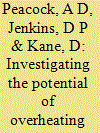

|
|
|
|
|
| Publication |
2010.
|
| Summary/Abstract |
Dynamic simulation is used with defined domestic building variants to investigate internal temperatures of UK dwellings. Factors such as a warming climate and varying internal heat gains are estimated to examine whether UK domestic buildings are likely to be prone to overheating in the future, and therefore require mechanical air conditioning. The study suggests that the ability, or inability, of the occupant to adapt to bedroom temperature is paramount in the understanding of the conditions for overheating. While this is difficult to quantify (and a range of comfort temperatures are proposed), the effect of changing the building construction and geographical location can result in significantly different thermal conditions. As might be expected, the problem appears most noticeable for buildings in the south of the UK and with lightweight constructions. Even with a window-opening schedule applied to such a scenario, the average internal temperature is simulated as being over 28 °C for almost 12% of the year. A different metric, defined as "cooling nights", suggests that there might be a cooling problem in bedroom areas for approximately a third of the year. In the North of the UK, and also for solid wall dwellings, this problem diminishes significantly.
|
|
|
|
|
|
|
|
|
|
|
|
|
|
|
|
| 9 |
ID:
092663
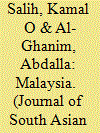

|
|
|
| 10 |
ID:
119792
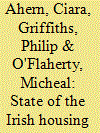

|
|
|
|
|
| Publication |
2013.
|
| Summary/Abstract |
Ireland's housing stock has been identified as being amongst the least energy efficient in Northern Europe. Consequently, atmospheric emissions are greater than necessary. Government funded schemes have been introduced to incentivise the uptake of thermal retrofit measures in the domestic Irish market. A study of Ireland's housing highlights the dominance of detached houses (43%), 72% of which are rurally located and are predominantly heated with fuel oil. This paper investigates the economic and carbon case for thermal retrofit measures to the existing detached, oil centrally heated, rural housing stock. The study found the case for energy efficiency measures to be categorical and supports the Irish Government's focus on energy efficiency policy measures. Thermal retrofit measures in the detached housing stock have the potential to realise an averaged 65% theoretical reduction in heating costs and CO2 emissions for houses constructed prior to 1979 (coinciding with the introduction of building regulations) and around 26% for newer homes, thus offering a significant contribution (44%) to Ireland's residential carbon abatement projections and hence in meeting the EU's directives on energy and carbon. The greatest savings (36%) of Ireland's carbon abatement projections result from improving the energy efficiency of the pre 1979 stock.
|
|
|
|
|
|
|
|
|
|
|
|
|
|
|
|
| 11 |
ID:
172025
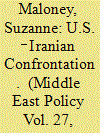

|
|
|
|
|
| Summary/Abstract |
As you saw in today's program announcement, I am a former ambassador to Oman, and I would like to take a moment to note the end of an era in the region — the passing of His Majesty Sultan Qaboos on January 10. For almost 50 years, Sultan Qaboos was a source of great wisdom and counsel to many, including American presidents, who sought his advice to deal with the challenges of the region. I was privileged as ambassador to have the opportunity to do the same. There's no one I respected more in terms of his intelligence, his knowledge and his efforts to try to bring peace and stability to the region than Sultan Qaboos. He will certainly be missed.
|
|
|
|
|
|
|
|
|
|
|
|
|
|
|
|
|
|
|
|
|